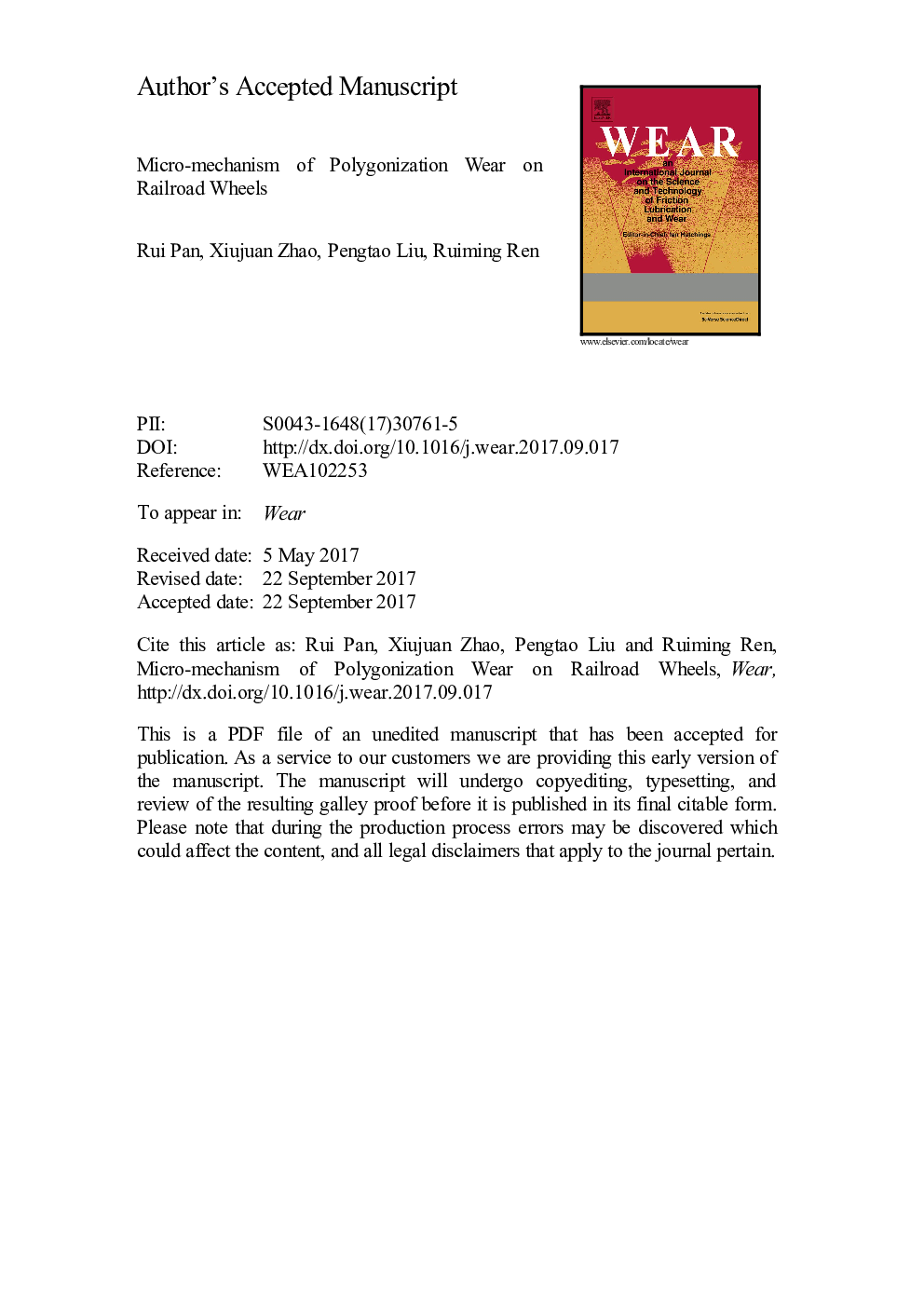| Article ID | Journal | Published Year | Pages | File Type |
|---|---|---|---|---|
| 7004097 | Wear | 2017 | 16 Pages |
Abstract
Polygonization wear (PolyW) is a form of wear observed on railroad wheels that is characterized by a change in the morphology of surface features from circular to non-circular due to eccentricity of wheel motion and the wheels' rotational inertia. Thus, PolyW tends to form under conditions of vertical/horizontal vibrations between wheels and rails. The current experimental investigation in rolling contact of CL65 wheel steel focuses on the micro-mechanisms of PolyW. Weight loss statistics, measurements of surface profiles, macro-morphology observations of surfaces, hardness tests and microstructural observations were used to characterize changes in the microstructure and properties of the wheel specimens at different wear stages. During rolling contact, wear weight loss dramatically increased due to polygonization. As a result of an adhesive wear process, the depth of the plastically deformed layer on wave crests remained almost the same and the hardness increase was relatively low. However, at wave troughs, the depth of the plastically deformed layer increased with increasing number of rotations and the hardness increase was more obvious. Adhesive wear was gradually replaced by fatigue wear. From this work, it is proposed that during rolling, non-uniform force on the contact surface, arising from radial vibration from the shaft, led to non-uniform plastic deformation of the outermost layer. In the regions of higher plastic deformation, cracks tended to form and expand along the fibrous structure and micro-spall pits deepened and became interconnected. Wave crests and troughs then formed on the surface.
Related Topics
Physical Sciences and Engineering
Chemical Engineering
Colloid and Surface Chemistry
Authors
Rui Pan, Xiujuan Zhao, Pengtao Liu, Ruiming Ren,
